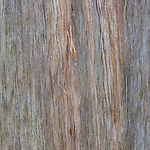Evolution and Biogeography
-

Eucalyptus acmenoides, White Mahogany, detail of bark
Details
Under this theme we have listed naturalists, explorers, and botanical researchers who have studied evolution and biogeography of eucalypts.
The great diversity of eucalypt species and their natural distributions have been shaped by the processes of biological evolution and earth history (geology and climate). Given that eucalypts are the dominant trees over a large proportion of the Australian continent, unravelling their evolution provides insight into a major component of terrestrial biodiversity, and potentially into the history of the continent itself. Modern classifications of eucalypts are also based on knowledge of their evolutionary relationships (family tree).
Understanding of eucalypt evolution and biogeography comes from studies of the distributions of species, plant morphology (including the structure and development of eucalypt flowers), studies of fossils, and genetic variation revealed by DNA markers. Inferences about relationships of eucalypt species gave rise to the taxonomic splitting of the "bloodwood" eucalypts (genus Corymbia) from genus Eucalyptus in the mid 1990s. It was largely based on research at the Royal Botanic Gardens Sydney (Ken Hill and Lawrie Johnson) and The University of Melbourne (Pauline Ladiges, Frank Udovicic and colleagues), and stirred controversy among professional botanists and eucalypt enthusiasts.
Detailed studies of genetic variation among eucalypt species, especially by researchers at the University of Tasmania around 2010 (Brad Potts, Gay McKinnon, Dorothy Steane and colleagues) have revealed complex interactions among closely related species of Eucalyptus, e.g. those classified in the same taxonomic series, section or subgenus. Their work shows that hybridisation among species has repeatedly resulted in transfer of genetic material (especially chloroplast DNA) between species. It also highlights eucalypts as an interesting group in which to study the evolutionary processes of speciation and hybridisation.
Studies of fossils include exciting reports in 2011 by Maria Gandolfo (Cornell University) and colleagues that eucalypts occurred in southern South America in the Eocene period (about 52 million years ago). Eucalypts do not occur naturally in South America today; it is thus inferred that they were more widespread in the past, and have subsequently gone extinct in South America. The fossils also provide reference points for inferring the ages of various eucalypt lineages, for example, in calibrating age estimates based on levels of DNA sequence divergence among living species ("molecular dating").
Michael Bayly, February 2014
Clicking on links in the list below will take you to the relevant entry in the Encyclopedia of Australian Science
B
- Bayly, Michael James (1970 - ) - Academic, Phylogenetic systematist, Plant evolutionary biologist
- Briggs, Barbara Gillian (1934 - ) - Botanist, Phylogenetic systematist
- Byrne, Margaret Mary (1960 - ) - Biogeographer, Ecology and Conservation, Plant geneticist
C
D
- Darwin, Charles Robert (1809 - 1882) - Naturalist
- Drinnan, Andrew Neil (1958 - ) - Academic, Botanist
G
- Gandolfo, Maria Alejandra - Evolutionary biologist, Palaeobotanist
H
- Hill, Kenneth D. (1948 - 2010) - Botanist
- Howitt, Alfred William (1830 - 1908) - Anthropologist, Botanical collector, Botanist, Explorer, Geologist, Naturalist
J
- Johnson, Lawrence Alexander Sidney (Lawrie) (1925 - 1997) - Botanic gardens director, Botanist
K
- Kirkpatrick, James Barrie (1946 - ) - Environmental scientist, Geographer
L
- Ladiges, Pauline Yvonne (1948 - ) - Botanist, Phylogenetic systematist, Taxonomist, University Administrator
P
- Potts, Bradley - Biogeographer, Eucalypt geneticist
S
- School of Botany, The University of Melbourne (1880s - ) - Education, Plant science
- Steane, Dorothy A. - Eucalypt geneticist, Plant evolutionary biologist



